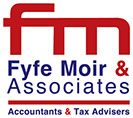Following setbacks in court, HMRC have decided that they are changing how the Flat Rate Scheme (FRS) operates. We are somewhat bemused by their headlining of the changes as “tackling aggressive abuse of the VAT Flat Rate Scheme”, since as far as we can see all that businesses have done is followed the rules and guidance provided to them by HMRC on the implementation of VAT from when the scheme was first introduced. The subtext to all of this is of course that the scheme is costing way more in lost VAT revenue than HMRC ever envisaged.
The major change in the scheme is the introduction of a new business sector called “Limited cost traders”. HMRC define a limited cost trade as one who spends less than 2% of its sales on goods (not services) in an accounting period.
When working out the amount spent on goods, it cannot include purchases of:
• Capital goods (such as new equipment used in a business)
• Food and drink (such as lunches for staff)
• Vehicles or parts for vehicles (unless running a vehicle hiring business)
A firm will also be a limited cost trade if it spends less than £1,000 a year, even if this is more than 2% of the firm’s turnover on goods.
So, who will be affected by this change?
It will increase the VAT paid by labour intensive businesses where very little is spent on goods. For example, this may affect Oil contractors, consultants, hairdressers and accountancy firms.
Mike Cherry, national chairman of the Federation of Small Businesses said, “Many small businesses rely on the optional VAT flat rate scheme to simplify the management of their tax affairs”
At the heart of the reform is the introduction of a new flat rate category; the Limited Cost Trader. This new category introduces a 16.5% rate for businesses with limited costs.
If you fall into this category, then this example should assist you in deciding whether or not to stay in the scheme.
Turnover of £85,000
VAT at 20% – 17,000
Total Invoiced – £102,000
Fixed rate VAT payable is £16,830. “Profit” on Scheme calculations £170. If your input VAT is likely to be in excess of £170 then it would be advisable for you to withdraw from the scheme.
The new scheme commences on 1 April 2017 and you should contact us to discuss your options.
